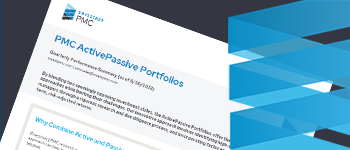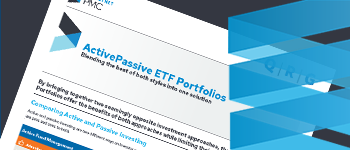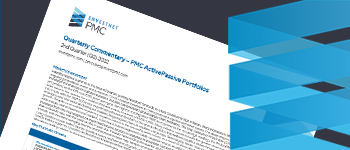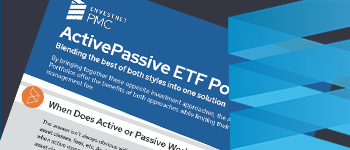ActivePassive PMC ETF Portfolios
By blending two seemingly opposing investment styles, the ActivePassive PMC ETF Portfolios offer the potential benefits of both approaches while limiting their challenges. We pair this innovative approach with a rigorous research and due diligence process to identify high-conviction ETFs.
ActivePassive is grounded in over 15 years of research and we've been managing these portfolios for over a decade.
Offer clients the right ActivePassive portfolio based on their objectives and risk tolerance.
ETFs are the efficient chassis for this solution, providing tax-efficiency and an easier building block for advisors when it comes to client models
.
Leverage the best thinking from PMC including manager research, capital markets assumptions, asset allocation, and more.
Key Facts*

Monthly Update: ActivePassive PMC ETF Portfolios
Learn more

Fact Sheet: ActivePassive ETF Portfolios
Learn more

Brochure: ActivePassive ETF Portfolios
Learn more

Quarterly Commentary: ActivePassive ETF Portfolios
Learn more

One-Pager: ActivePassive ETF Portfolios
Learn more
Using a proprietary methodology, PMC constructs a series of risk-based asset class portfolios (ACPs) at various equity tiers, each with a multitude of diversifying asset class combinations.







Qualitative and quantitative research teams providing comprehensive, unbiased research and due diligence on broad spectrum of asset classes and investment vehicle.
Large case, product, and institutional consultant teams partnering with advisors and enterprises to provide broad support around all PMC solutions and services.
Portfolio management team constructs and manages PMC's portfolios while constantly monitoring managers and systematically rebalancing.